This Has Touched My Life 1991-92
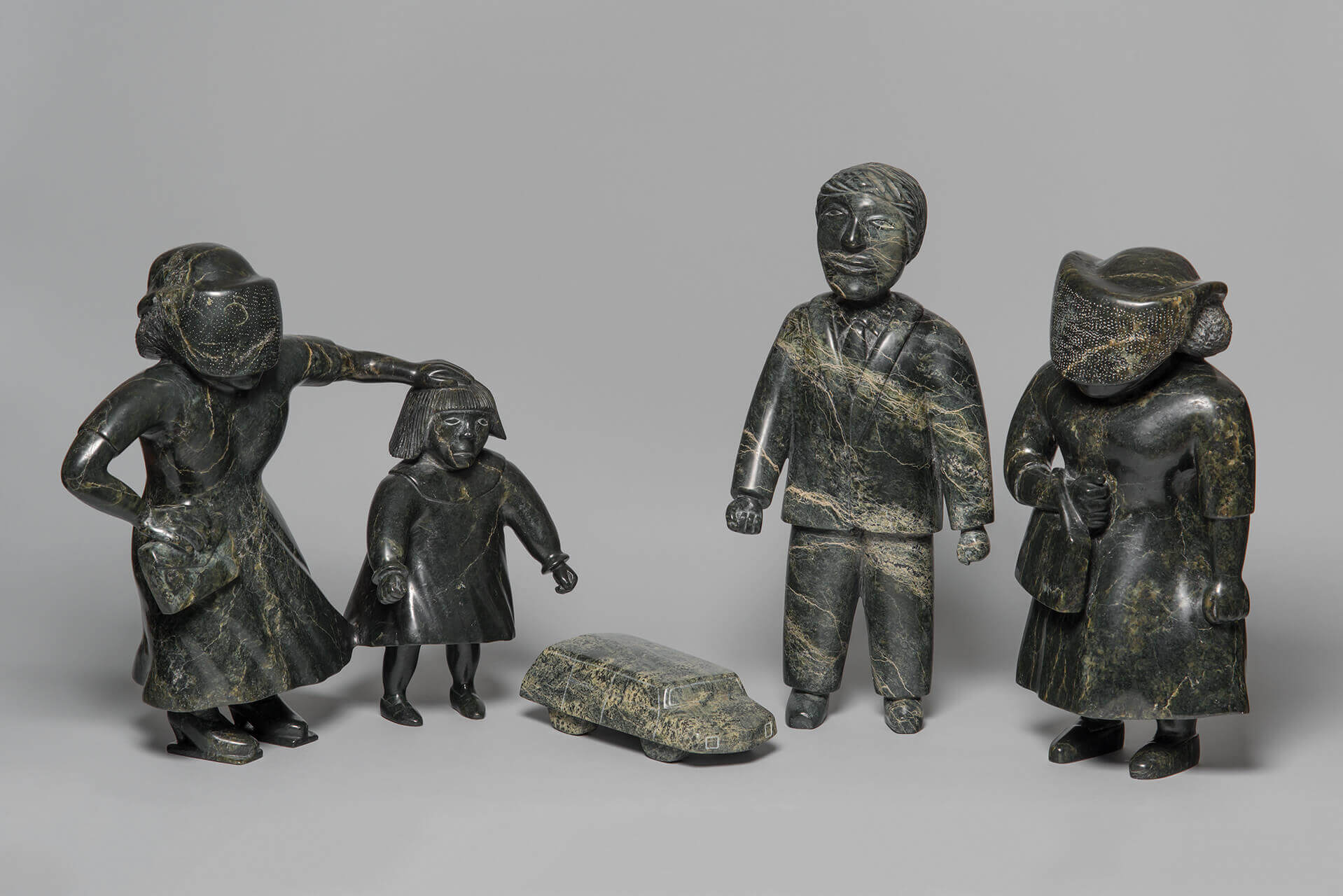
Oviloo Tunnillie, This Has Touched My Life, 1991–92
Serpentinite (Tatsiituq); woman, 16.7 x 9.5 x 7 cm; woman and child, 16.5 x 19.2 x 10.5 cm; man, 18.5 x 9 x 5.25 cm; car, 3 x 9.2 x 4.2 cm
Signed with syllabics
Canadian Museum of History, Gatineau
In This Has Touched My Life, 1991–92, a young girl in modern dress stands beside two veiled women, a man, and an automobile in a sculptural grouping. The work is the first of Oviloo Tunnillie’s carvings to directly reference her years in the Manitoba hospital where she was treated for tuberculosis. Oviloo initially titled the carving The Group for a 1992 exhibition at Marion Scott Gallery in Vancouver.1 The title was later changed to This Has Touched My Life, and the work was acquired by the Canadian Museum of Civilization (now the Canadian Museum of History) for the exhibition Inuit Women Artists: Voices from Cape Dorset in 1994. In a text for the exhibition catalogue, Oviloo said of this piece:
When I was in a hospital away from home, it was during the years of 1957, 1958 and 1959. While I was away, I was taken by automobile to see these two women from the hospital where I stayed. . . . When I saw these two [women], I really noticed the way they were dressed and their faces were hidden. . . . They were unrecognizable as they wore hats that had lace pulled down in front of their faces and they each had purses. I really looked at how they were dressed and having seen them like this has been most memorable for me. I had not met any white person such as these two yet. I wonder sometimes if they were ashamed of their faces because I’ve never seen that before. . . . [It] was after we moved out of the hospital that we went to see these two veiled women. So this has been the most memorable part of my life while I was away there.2
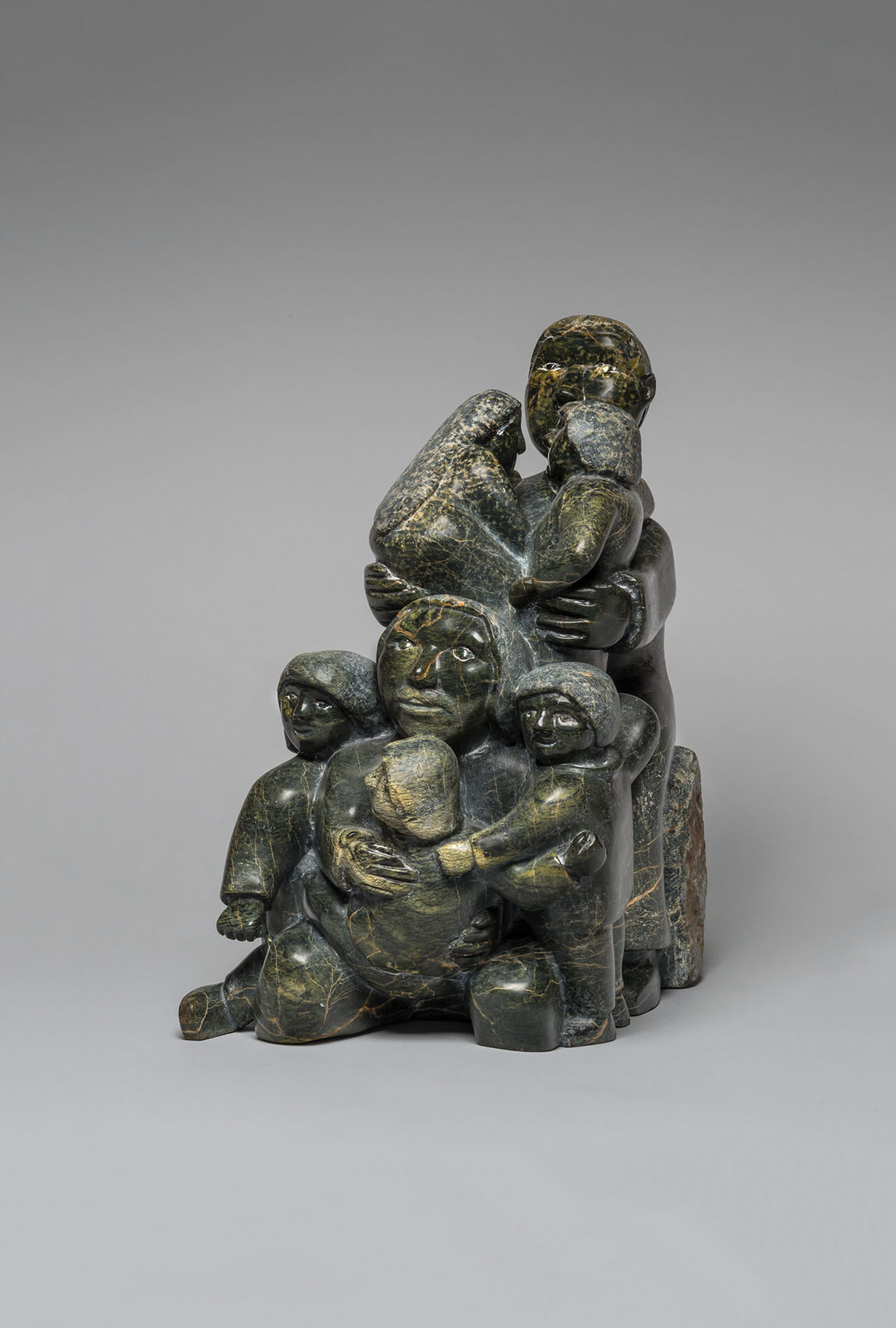
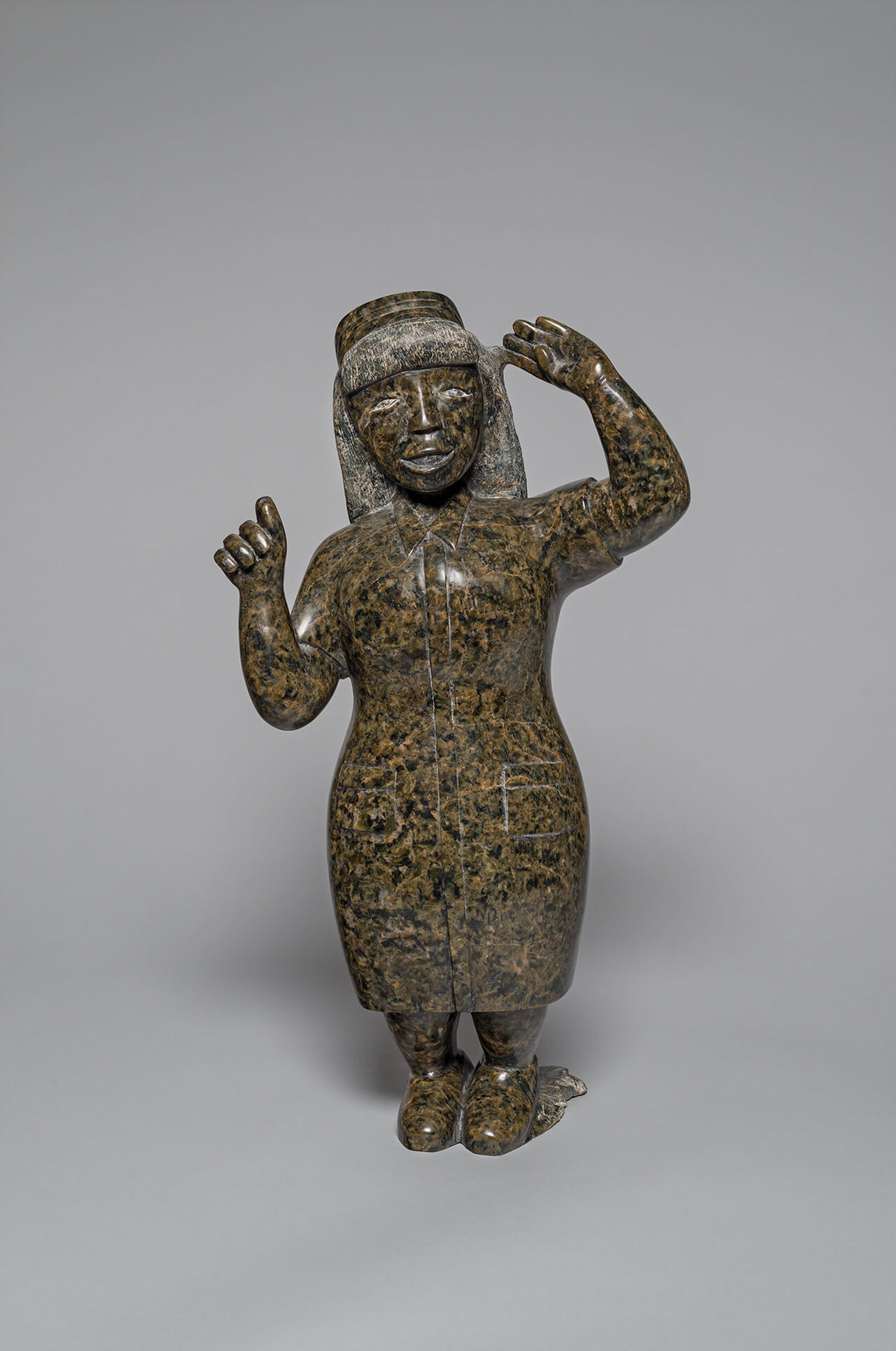
In the sculpture Oviloo appears as a small child with the two veiled women, the driver of the car in a suit, and the car, as she described. The only physical connection between the figures is a dominating hand one of the women has placed firmly on the top of Oviloo’s head. One of the few known carvings by Oviloo with multiple separate, free-standing elements, this composition captures the sense of alienation and strangeness of her memory of the experience. It stands in complete contrast to her tight-knit grouping, Oviloo’s Family, 2002, in which the figures are woven together into one entity.
When shown a photograph of this sculpture, Oviloo’s sister Nuvalinga commented that they cut Oviloo’s hair when she was in the hospital. “She had really long hair when she left. Girls’ hair was never cut back then.”3 Apart from revealing the culturally insensitive treatment of Inuit girls, this observation helps to identify other autobiographical carvings that depict Oviloo when she was still in the hospital or had recently returned home to her parents’ camp. For example, a tender portrait titled My Mother and Myself, 1990, shows a short-haired Oviloo with her mother, Sheokjuke (1928–2012).
The sadness of the hospital years is poignantly expressed in several other sculptures. Nurse with Crying Child, 2001, shows Oviloo as a weeping child on the lap of a nurse in the hospital. In Nurse, 1995, the large figure of a nurse strikes a somewhat ridiculous pose, possibly thinking that she was entertaining a lonely, grief-stricken little girl.
Two other pieces portray Oviloo as a timid child with a teddy bear held behind her back (as in Self-Portrait at Manitoba Hospital (Holding Teddy Bear), 2010) and as a weeping child kneeling at what may be a chest of drawers (Oviloo in Hospital, c.2002). Oviloo explained that for a time she had her own room “filled with girl things that had been bought for me.”4 It is quite clear that the hospital, typically, made no effort to dress their Indigenous patients in ways that respected their cultures. Another hospital piece is wrenching in its raw emotion, as Oviloo screams while tied to her hospital bed (Oviloo in Hospital Bed, c.2000).

 About the Author
About the Author
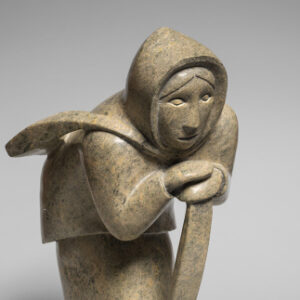 More Online Art Books
More Online Art Books
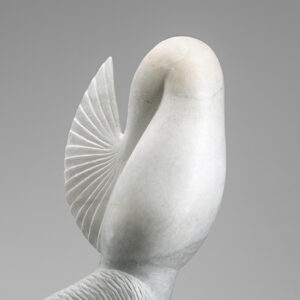 Acknowledgements
Acknowledgements